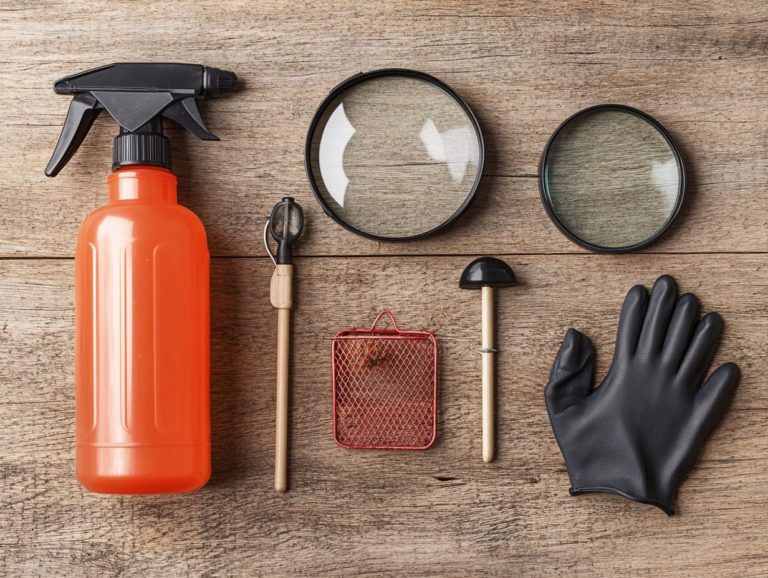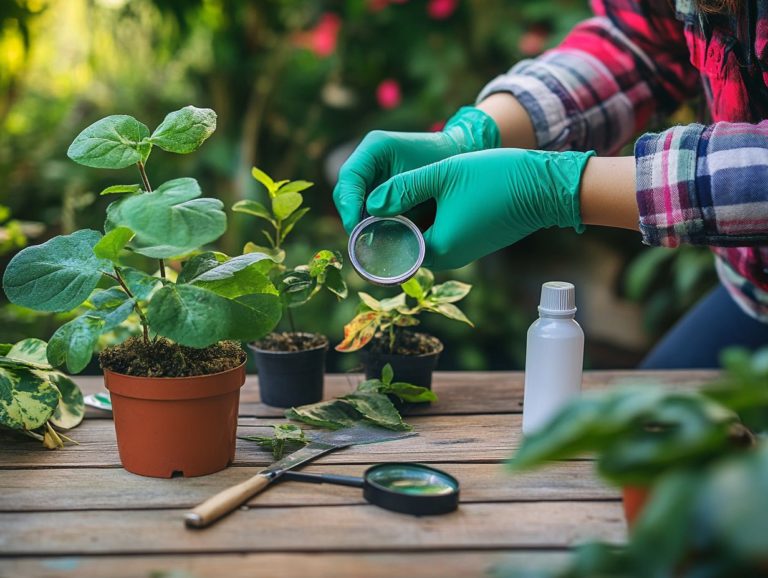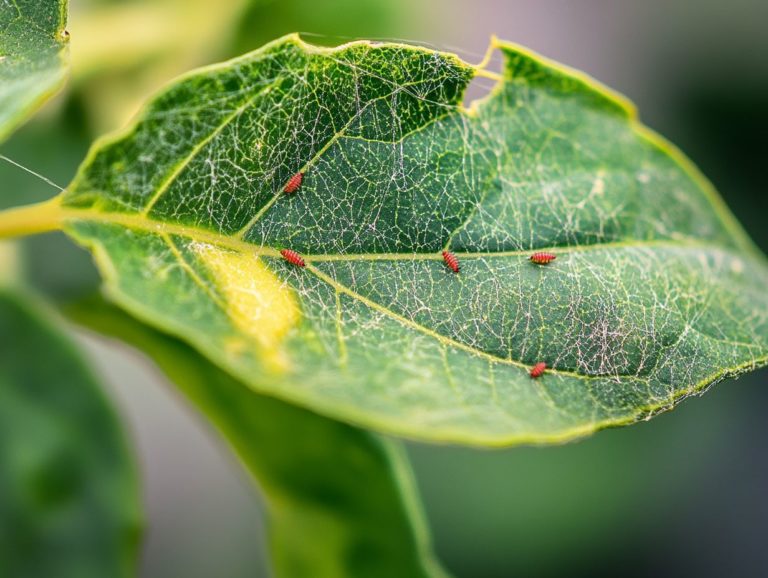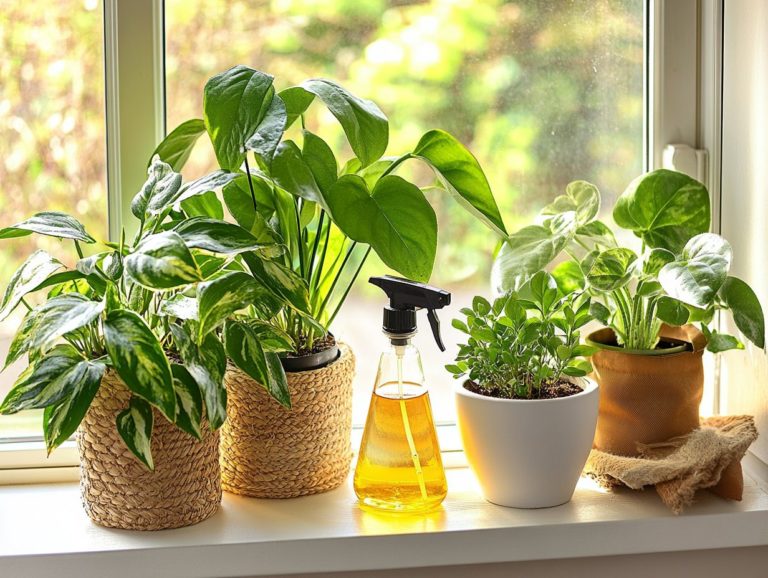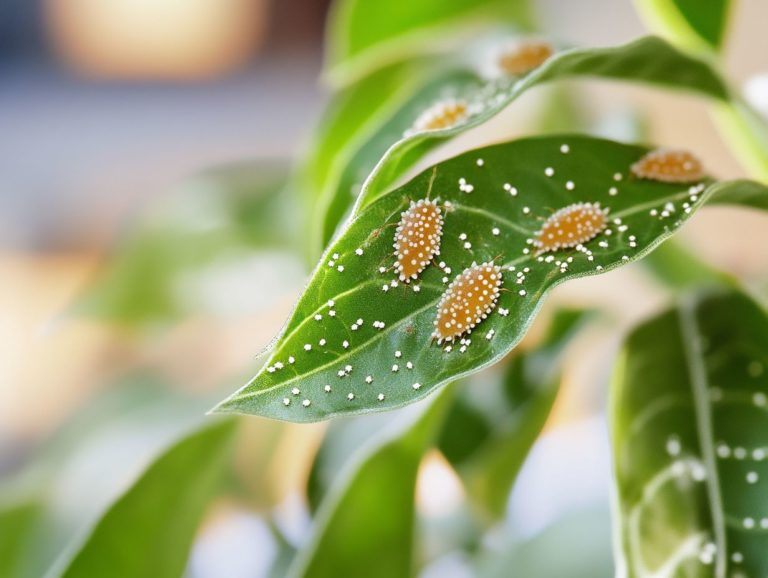How to Maintain Plant Health to Prevent Pests
Healthy plants are the cornerstone of any thriving garden, yet they frequently encounter challenges from pests and diseases. Understanding the factors that influence plant health is essential for both prevention and effective management.
Get ready to discover effective strategies that will keep your plants vibrant and pest-free! You ll learn how to identify common pests and delve into both natural and chemical control methods.
Whether you re a seasoned gardener or just dipping your toes into the world of gardening, you’ll uncover the best practices to ensure your plants not only flourish but also remain pest-free.
Contents
- Key Takeaways:
- Understanding Plant Health
- Common Pests and Diseases
- Preventing Pests and Diseases
- Natural Pest Control Methods
- Chemical Pest Control Options
- Frequently Asked Questions
- What are some common ways to maintain plant health and prevent pests?
- Why is it important to maintain plant health to prevent pests?
- How often should I water my plants to maintain their health and prevent pests?
- What types of fertilizers are best for maintaining plant health and preventing pests?
- Are there any natural methods for preventing pests on plants?
- How can I tell if my plant is suffering from a pest infestation?
Key Takeaways:
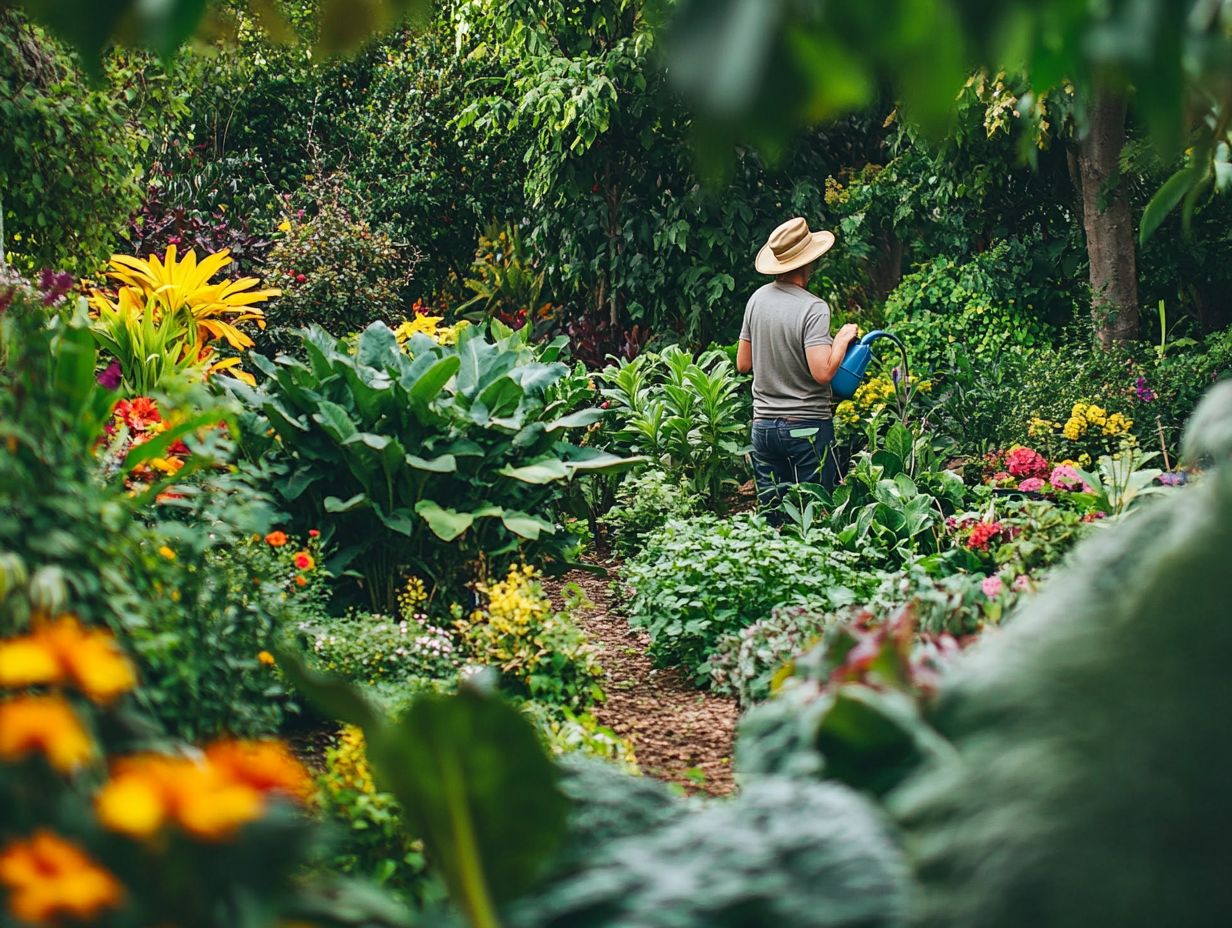
- Regularly check and maintain plant health to prevent pests and diseases.
- Implement healthy plant practices and proper nutrition to promote strong and resilient plants.
- Consider natural pest control methods and use pesticides only as a last resort.
Understanding Plant Health
Understanding plant health is essential for you as a gardener seeking to cultivate a robust and flourishing garden. This knowledge encompasses various factors, such as soil health, effective watering techniques, and the influences of pests and diseases.
Creating an optimal environment for plant growth can significantly reduce pest issues and disease outbreaks. By prioritizing these crucial elements, you can nurture plants that thrive in their surroundings and withstand environmental challenges. Additionally, being aware of tips for detecting hidden plant pests can further enhance your plant care routine.
Factors that Affect Plant Health
Several factors play a vital role in determining your plants’ health. These include soil quality, irrigation techniques, and the thoughtful selection of appropriate plant species.
High-quality soil enriched with organic matter fosters strong root development and enhances nutrient uptake. Effective watering practices whether through drip irrigation or rainwater harvesting ensure your plants receive just the right amount of moisture, avoiding the risks of over- or under-watering.
These methods, such as crop rotation and intercropping, help combat pest infestations naturally. Opting for pest-resistant varieties can also reduce your dependence on chemical treatments, supporting sustainable gardening and promoting biodiversity.
By understanding these interconnected elements, you can establish a flourishing landscape that reflects your dedication to gardening excellence.
Common Pests and Diseases
Common pests and diseases can pose serious threats to your plants’ health and the vitality of your garden. These issues can lead to pest infestations and disease outbreaks that compromise the beauty of your landscape and diminish your garden’s yield.
Identifying and Managing Pests and Diseases
Identifying and managing pests and diseases begins with your keen observation and monitoring of plants. Detecting early symptoms of infestation or illness enables you to address issues before they escalate, safeguarding the health and vitality of your crops.
You can use a range of pest identification methods, from meticulous visual inspections to utilizing sticky traps or pheromone lures. Once you’ve spotted potential issues, implementing various methods to manage pests is essential.
Sustainable approaches often emphasize the role of natural predators, such as ladybugs or lacewings, which help control pest populations without harming beneficial insects. By creating an environment that attracts these valuable allies, you can maintain plant health more effectively and naturally.
Preventing Pests and Diseases

Preventing pests and diseases is essential for achieving optimal plant health. You must combine rigorous garden hygiene practices, thoughtful watering techniques, and effective pest prevention strategies to cultivate a thriving environment for your plants.
Your garden deserves the best care! Start using these methods today to transform your garden into a thriving oasis!
Healthy Plant Practices
Implementing healthy plant practices is vital for cultivating a resilient garden that can withstand pest outbreaks and disease issues.
To achieve this, prioritize maintaining garden hygiene. This means promptly removing dead leaves and decaying plant matter, which can become a haven for pests. Additionally, consider preventing pest infestations in indoor plants by using clean tools; sanitized equipment helps prevent the spread of diseases from one plant to another.
Methods that help manage pests naturally, such as crop rotation and companion planting, significantly enhance plant health. They disrupt pest life cycles and promote biodiversity. By adopting these practices, you safeguard your plants and contribute to a more sustainable ecosystem, ensuring long-term growth and vitality.
Proper Plant Nutrition
Proper plant nutrition is a fundamental pillar in nurturing healthy plants. It requires careful attention to soil health alongside the strategic use of fertilizers and composting techniques.
Without nutrient-rich soil, your plants will struggle to absorb the essential elements that fuel their growth, resilience, and overall vitality. Think of soil as a vibrant ecosystem; maintaining its health is paramount for the success of any gardening venture.
Incorporating compost is one of the most effective strategies to enrich your soil. Compost provides a balanced mixture of nutrients, enhances microbial activity, and improves water retention. Various composting methods, like cold composting and vermicomposting, play significant roles in this process.
By enriching the biological diversity within the soil, you cultivate a favorable environment, ensuring your plants receive the nourishment they need to truly flourish.
Natural Pest Control Methods
Natural pest control methods offer eco-friendly solutions for managing pests while nurturing healthy plants. By leveraging beneficial insects and organic solutions, you can create a thriving ecosystem that supports both flora and fauna.
Using Beneficial Insects and Plants
Utilizing beneficial insects and plants is an effective strategy for pest management. This approach creates a balanced ecosystem that naturally controls pest populations.
It reduces reliance on chemical pesticides and fosters a healthier environment for your crops and pollinators. By incorporating specific plants that attract beneficial insects, such as ladybugs and lacewings, you can enhance your interplanting strategies and bolster the resilience of your garden. Additionally, consider following indoor plant pest prevention tips to further protect your plants.
Beneficial organisms prey on common pests, effectively keeping their numbers in check without harming surrounding flora. By fostering biodiversity through diverse planting schemes, you create microhabitats that support various predatory species. This ultimately leads to sustainable agricultural practices that benefit both you and nature.
Homemade Pest Control Remedies
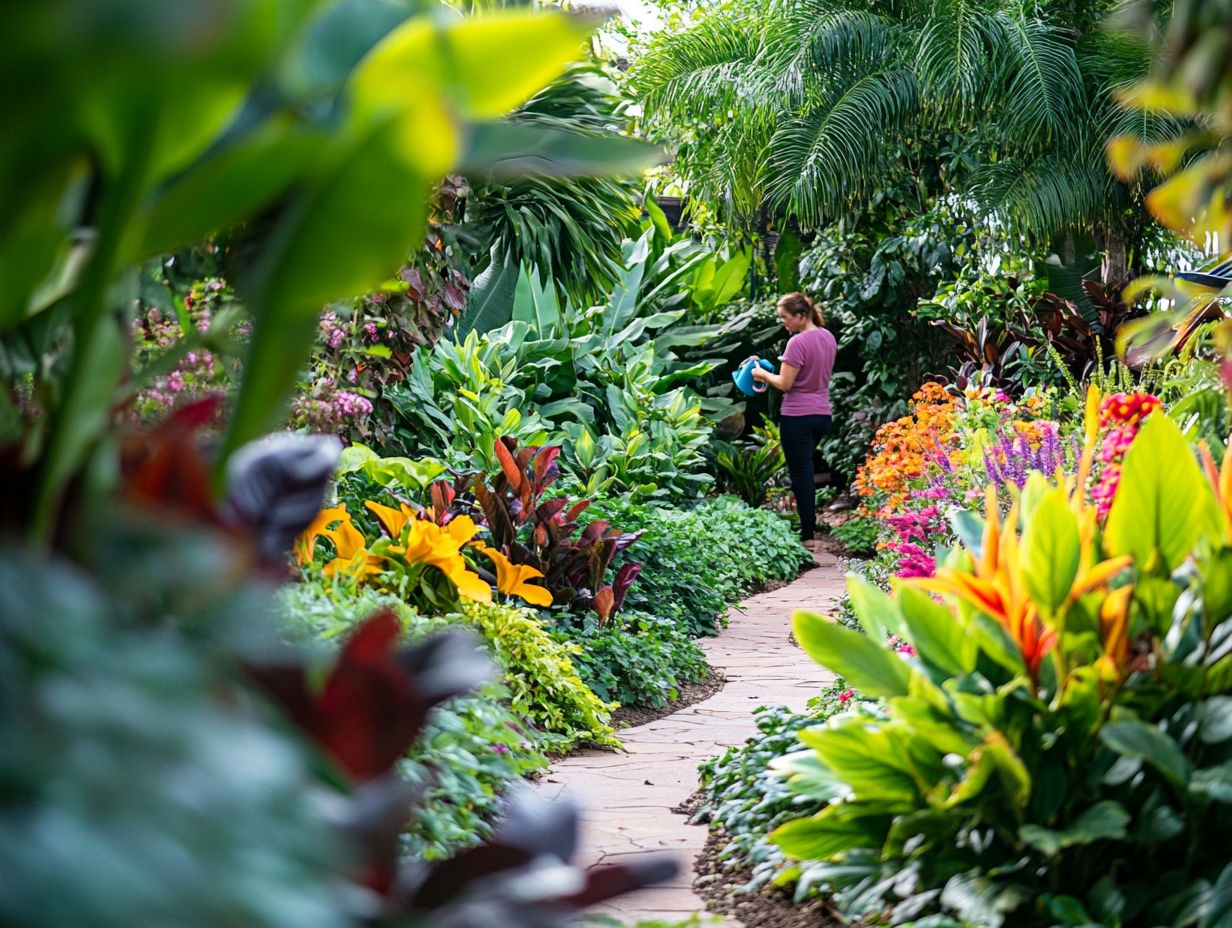
Homemade pest control remedies provide organic solutions that are both effective and gentle on the environment. They make use of common ingredients and compost materials.
Natural substances like garlic, neem oil, and diatomaceous earth are used in these remedies. Not only do they help manage pest populations, but they also promote the overall health of the plants you’re nurturing. By employing these methods and learning how to manage indoor plant pests naturally, you create a safe growing environment, free from harmful chemicals.
These recipes do more than just deter pests; they can enhance soil quality and attract beneficial insects, fostering a balanced ecosystem in your garden. As awareness of sustainable gardening practices grows, the allure of these organic solutions increasingly captures the attention of both novice and seasoned gardeners.
Chemical Pest Control Options
Chemical pest control options offer swift solutions for managing pest issues. However, they come with environmental considerations that require careful thought and responsible application.
Understanding and Using Pesticides
Understanding and effectively using pesticides is crucial for your pest management success. You need to be well-versed in their application methods and the optimal timing of actions to minimize any negative impacts.
You ll find a broad spectrum of pesticides at your disposal. Herbicides are chemicals designed to kill unwanted plants, specifically weeds, while insecticides target particular pests. These chemicals can be applied through various methods, including sprays, granules, and bait formulations each tailored to different scenarios and environments.
Timing is critical. It plays a vital role in maximizing effectiveness while minimizing the risk of harming beneficial organisms or causing environmental damage.
By applying pesticides at the right growth stages of pests or during favorable weather conditions, you can significantly enhance their effectiveness. Making informed selections and applications not only protects your crops but also supports sustainable agricultural practices!
Frequently Asked Questions
What are some common ways to maintain plant health and prevent pests?
Some common ways to maintain plant health and prevent pests include proper watering, fertilizing, pruning, and using natural pest control methods.
Why is it important to maintain plant health to prevent pests?

Maintaining plant health is important because healthy plants are more resistant to pests and diseases. This reduces the need for harsh pest control methods that can harm the environment.
How often should I water my plants to maintain their health and prevent pests?
The frequency of watering depends on the type of plant and the climate it is grown in. Generally, plants should be watered when the top inch of soil is dry.
What types of fertilizers are best for maintaining plant health and preventing pests?
Organic fertilizers, such as compost or manure, are best for maintaining plant health and preventing pests. They provide essential nutrients without harmful chemicals.
Are there any natural methods for preventing pests on plants?
Yes, there are many natural methods for preventing pests on plants! These include introducing beneficial insects, using companion planting, and making homemade pest deterrent sprays.
How can I tell if my plant is suffering from a pest infestation?
Some signs of a pest infestation on plants include wilting, discoloration, holes in leaves, and visible pests on the plant. It’s important to regularly inspect plants for signs of pests.
Start your pest management journey today and keep your plants healthy!


